Planning
The school contacted SCILT/CISS to consider ways of introducing China and the Chinese Language. As they had no access to a teacher of Mandarin, the school was interested to see how much they could achieve in a twelve week project, without a language specialist. A meeting was held to discuss possible ideas and to share materials which might support the work – both on-line materials and physical materials. The P6 teachers were very keen to learn some Mandarin along with their pupils. Access to the CISS website enabled both teachers and their pupils to explore the characters and learn some important but simple phrases. A Chinese parent helper came in to help the pupils explore Chinese culture and her son, a P6 pupil, supported the teachers and fellow pupils with their pronunciation. The teachers were amazed at the amount of solid language learning that took place over a twelve week period with very little previous knowledge. Neither of the two teachers involved are MLPS trained, but all the teachers can see the benefits of this approach to learning a language by investigating its culture. The school is keen to cultivate a similar approach to the learning and teaching of other Modern Languages as the pupils have found it so motivating. In line with Curriculum for Excellence, it was suggested that the approach of “the pupil’s voice” is an effective starting point for introducing a language and culture. Pupils were asked :
- What do you know about China?
- What would you like to know about China?
- How would you like to find out about China?
Implementation
Pupils selected topics for both collaborative work and working in pairs or on their own. They explored all the curricular areas including:
Languages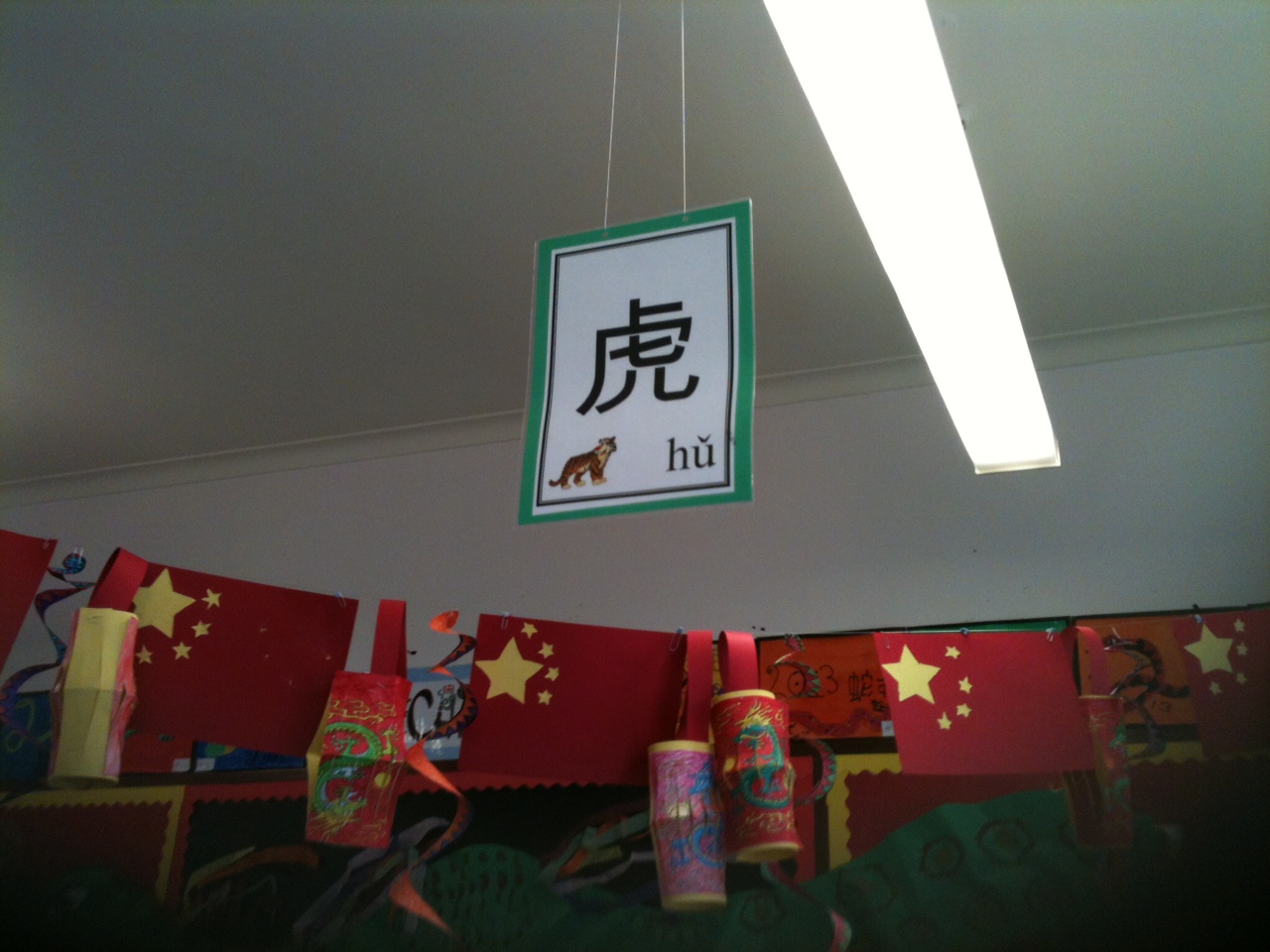
As far as language was concerned, simple phrases such as “hello”, “how are you”, “my name is...” and “goodbye” were part of every lesson over the twelve week period. It became part of their daily classroom routine. The children were fascinated by the appearance of the Chinese characters and were very motivated to learn to read and write the simple characters on the CISS website. The pupils often worked in groups and chose a Chinese animal to represent their group.
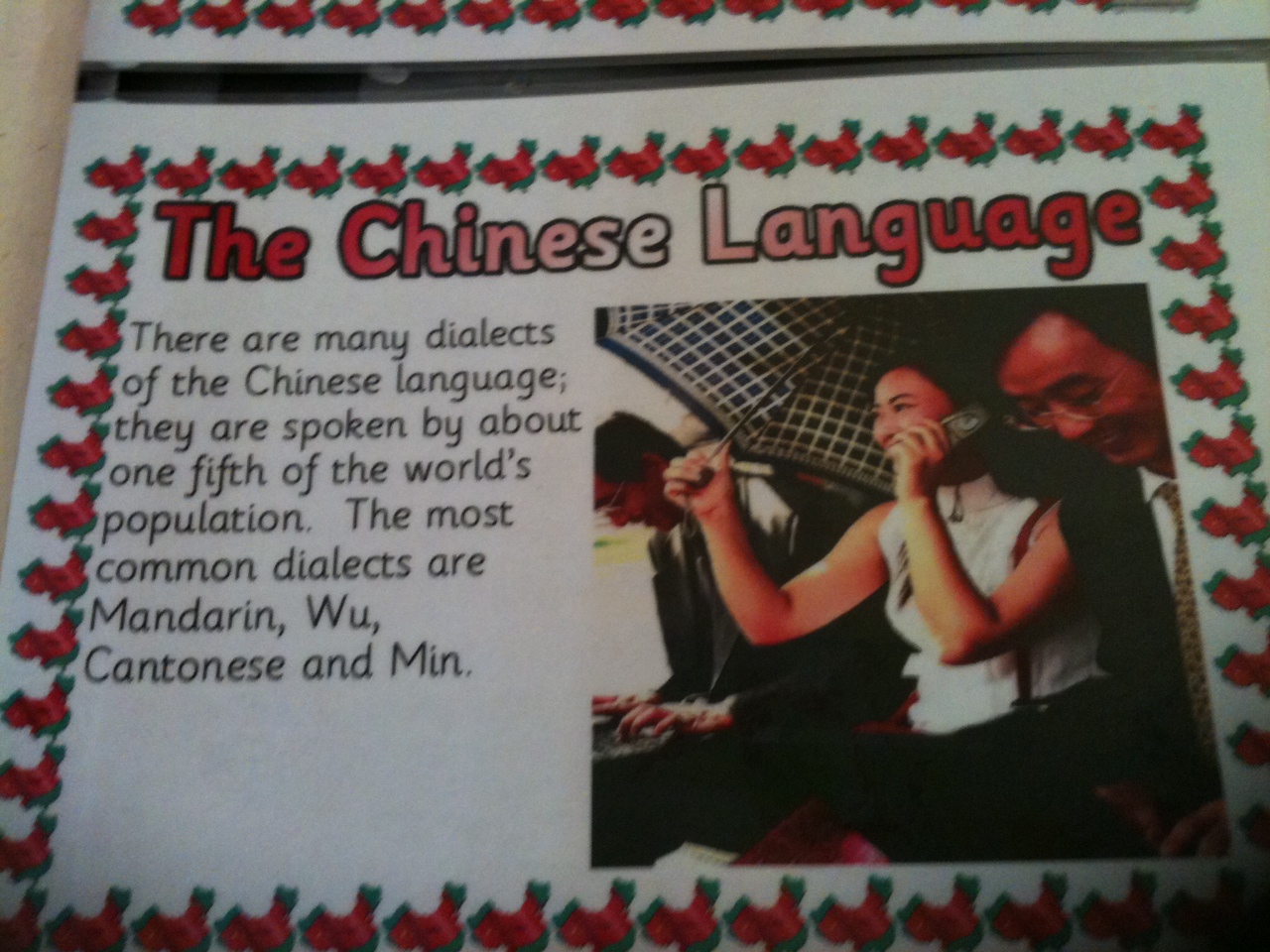 The pupils developed their knowledge of languages by learning about the different Chinese languages and dialects, such as Cantonese, Wu and Shanghai-ese. This afforded the class the opportunity to explore Scotland’s languages and the different languages and dialects spoken throughout the UK.The Chinese parent helper brought in Chinese language newspapers (available free in most Chinese supermarkets) and the children worked in pairs as “language detectives” to spot the character they knew. The pupils were very motivated by the real language context and the grown up nature of the work.
The pupils developed their knowledge of languages by learning about the different Chinese languages and dialects, such as Cantonese, Wu and Shanghai-ese. This afforded the class the opportunity to explore Scotland’s languages and the different languages and dialects spoken throughout the UK.The Chinese parent helper brought in Chinese language newspapers (available free in most Chinese supermarkets) and the children worked in pairs as “language detectives” to spot the character they knew. The pupils were very motivated by the real language context and the grown up nature of the work.
At the outset it was envisaged that this would be a Social Studies project which would last 12 weeks. However, the children became so enthralled with the context that they wanted to learn the language.
The learners’ enthusiasm and motivation was such that it grew way beyond expectation and the school is considering ways of taking the learning of Mandarin into P5 and P7 in the future.
Thus it is envisaged that progression in the learning of the language will be embedded as it is hoped that Mandarin may well become the L3 for the school in the future.
The language covered in the 12 week project included:
- Simple characters
- Numbers 1-99 and their characters and tones
- Recognition of importance of tones and learning of how they work using Panda Tones powerpoint on our website
- Some carefully chosen radicals
- Simple expressions and greetings
- Animals
- Weather
Remarkably, ALL pupils could read, recognise and say the above along with the correct tone and even write the simpler characters. It is all the more astonishing when we consider that this was achieved without a specialist teacher.
View pictures of the wall display of newspaper work
View this film clip of pupils conversing in Mandarin
Literacy
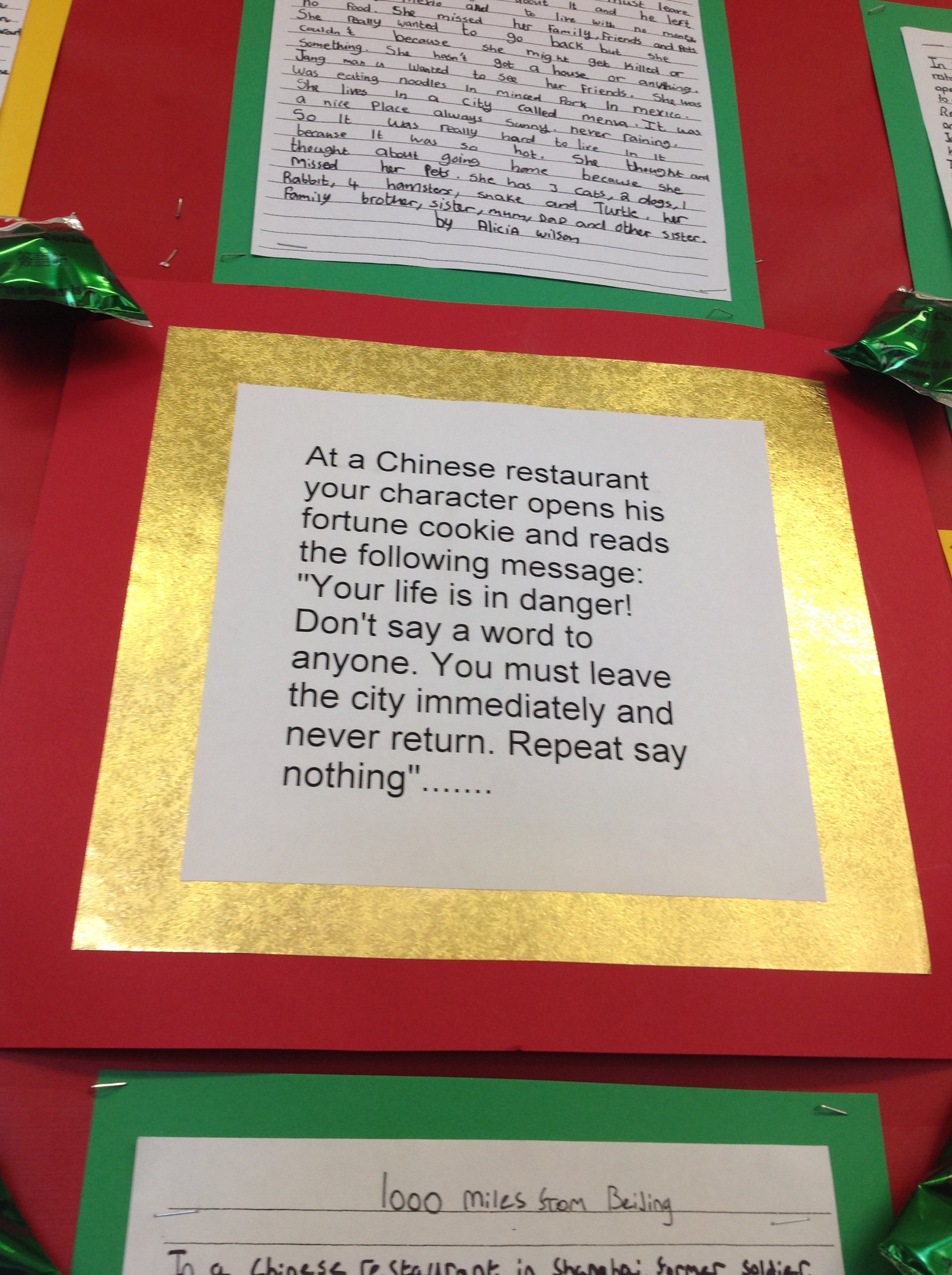 Learners designed menus for Chinese New Year with a specific focus on using as many appropriate and interesting adjectives in English as possible. The teachers, inspired by fortune cookie messages, used this as a stimulus for creative writing. Additionally, they used Chinese New Year as inspiration for poetry writing to say goodbye to the Year of the Dragon and to welcome in the Year of the Snake. Pupils also wrote letters to imaginary friends in China telling them about life in Scotland and made up profiles of their favourite Chinese celebrities. Individually, pupils made “fact files” about China and the Chinese language. The school is hopeful that they will find a suitable partner school in China to develop this idea further.
Learners designed menus for Chinese New Year with a specific focus on using as many appropriate and interesting adjectives in English as possible. The teachers, inspired by fortune cookie messages, used this as a stimulus for creative writing. Additionally, they used Chinese New Year as inspiration for poetry writing to say goodbye to the Year of the Dragon and to welcome in the Year of the Snake. Pupils also wrote letters to imaginary friends in China telling them about life in Scotland and made up profiles of their favourite Chinese celebrities. Individually, pupils made “fact files” about China and the Chinese language. The school is hopeful that they will find a suitable partner school in China to develop this idea further.
Chinese and Literacy pictures
Numeracy
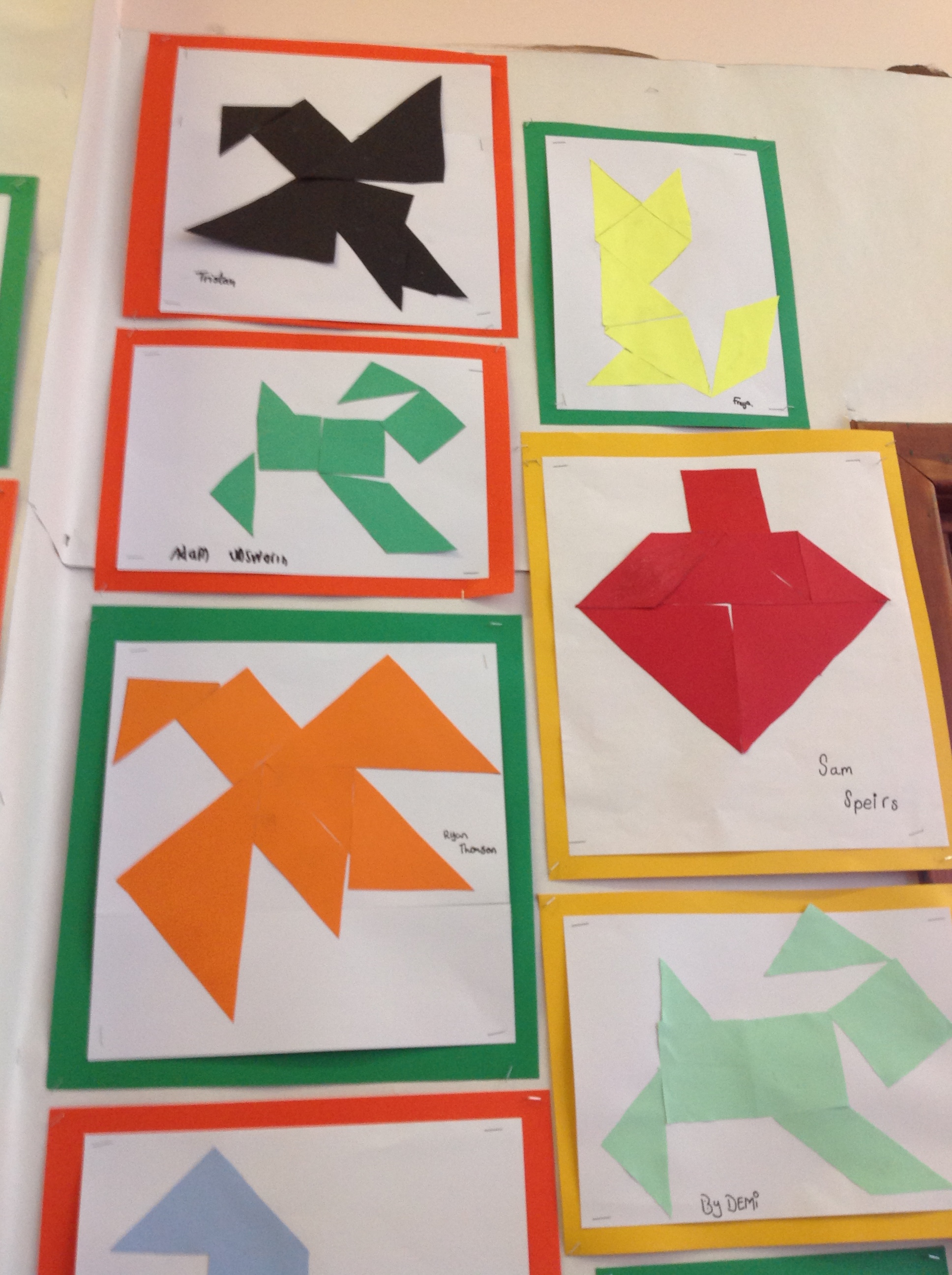
Firstly, pupils explored numbers in Chinese and learned to count to ninety-nine in the language, using number cards in Chinese, Pinyin and English. By investigating how numbers work in Mandarin, pupils went on to learn the months and days of the week. Tangrams originated from China and the children became fascinated by them. They worked collaboratively to apply their knowledge of geometry in order to produce highly complex and challenging tangram shapes.
View more numeracy pictures
Social Studies
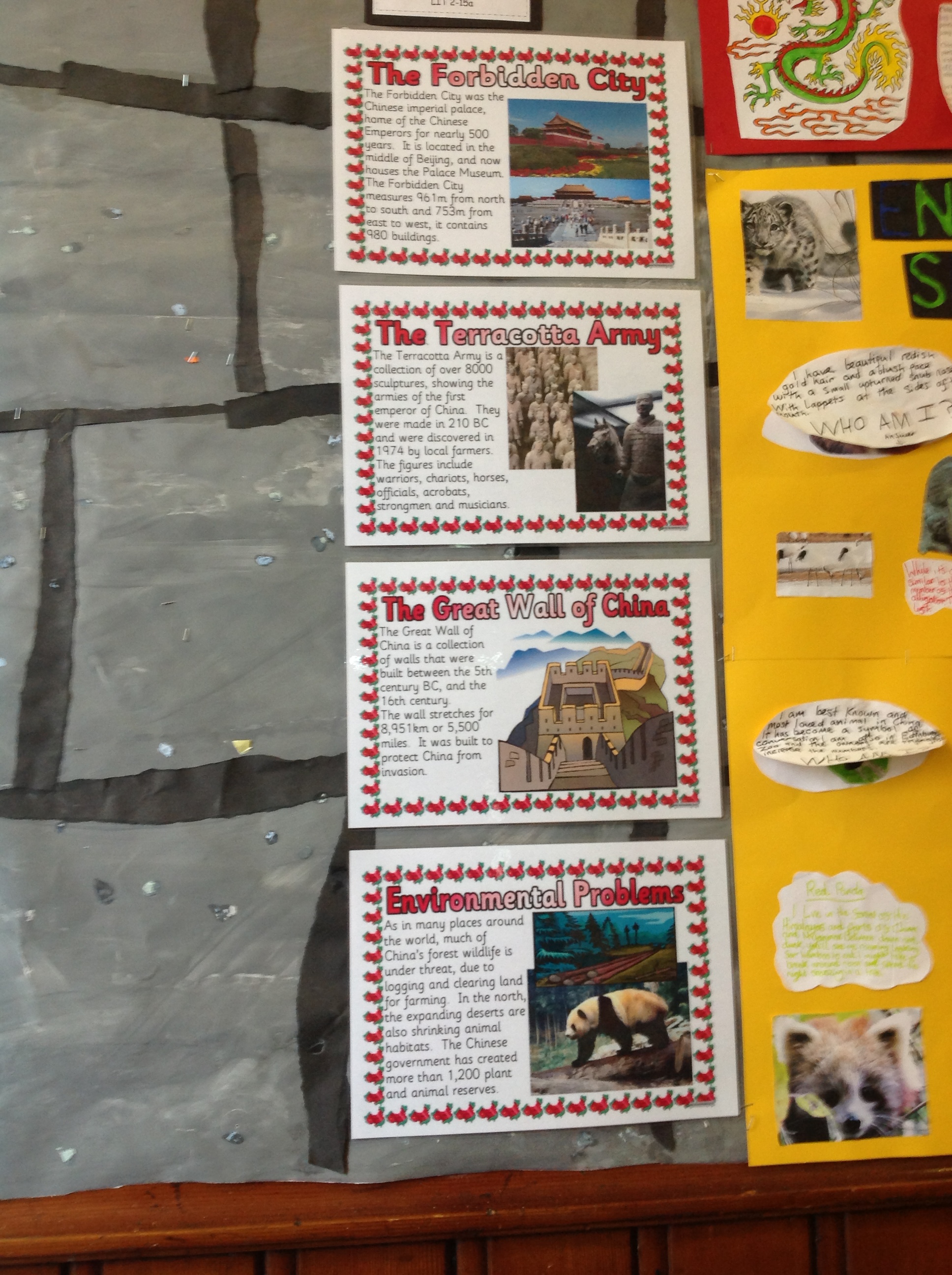 The teachers used Chinese New Year as a stimulus for exploring Chinese traditions such as “Spring Couplets” on doorways, traditional New Year food and customs and encouraged the children to draw comparisons between this and Scottish festivals. They researched the Terracotta Warriors and the building of the Great Wall during the time of the first emperor. Pupils also investigated the geography of China such as the two main rivers, the five famous mountains and the impact these geographical features have on daily life and culture.
The teachers used Chinese New Year as a stimulus for exploring Chinese traditions such as “Spring Couplets” on doorways, traditional New Year food and customs and encouraged the children to draw comparisons between this and Scottish festivals. They researched the Terracotta Warriors and the building of the Great Wall during the time of the first emperor. Pupils also investigated the geography of China such as the two main rivers, the five famous mountains and the impact these geographical features have on daily life and culture.
Other social studies images
Science
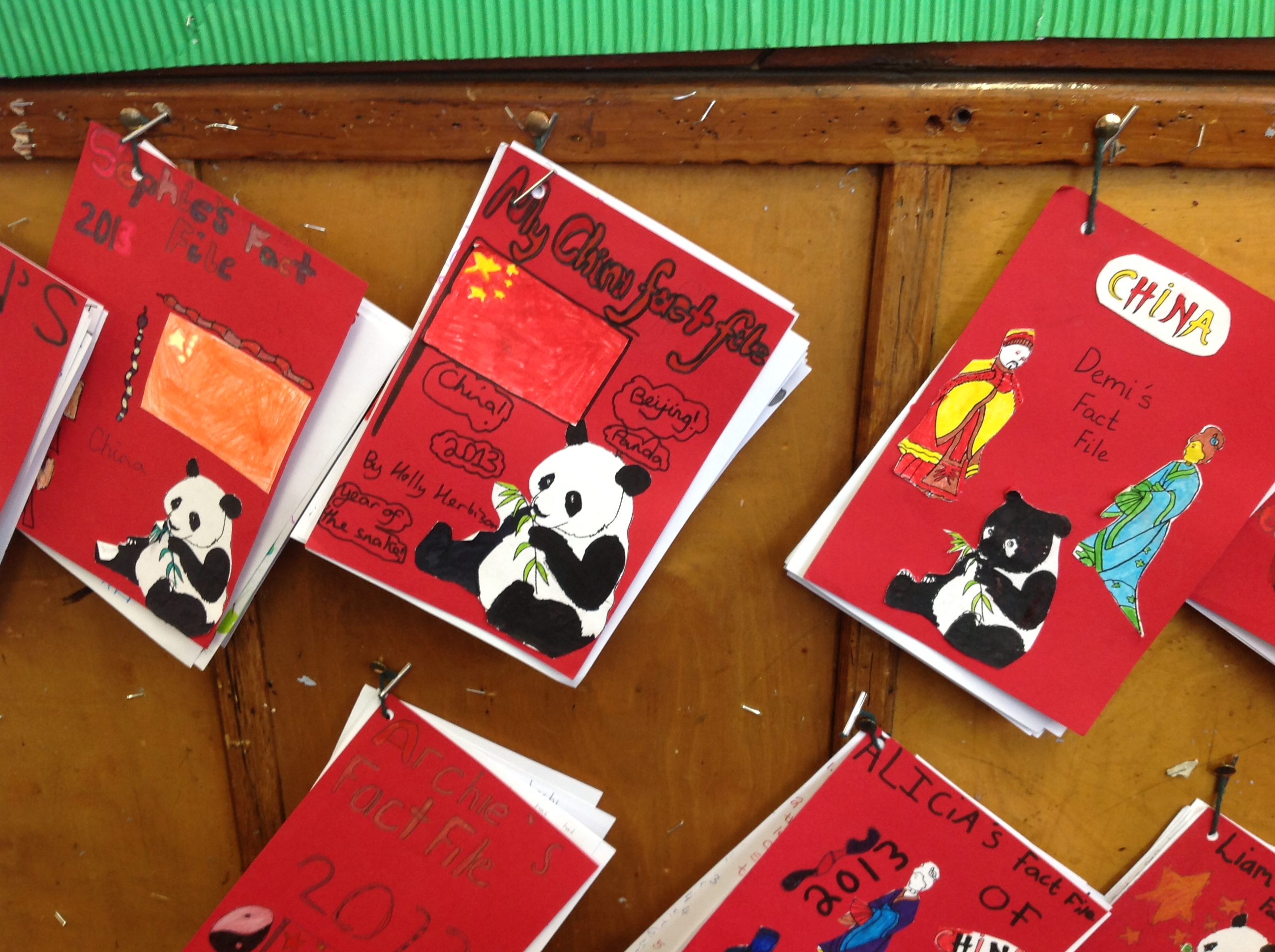 The pupils learned about the building of the Three Gorges Dam on the Yangtze and its environmental impact. They also found out about a wide variety of endangered that are indigenous to China and considered ways in which Scotland plays an important part in supporting China to find solutions to these environmental challenges, for example the work of Edinburgh Zoo and the Botanical Gardens. The pupils created “Fact Files” to compile the information that they gathered about China.
The pupils learned about the building of the Three Gorges Dam on the Yangtze and its environmental impact. They also found out about a wide variety of endangered that are indigenous to China and considered ways in which Scotland plays an important part in supporting China to find solutions to these environmental challenges, for example the work of Edinburgh Zoo and the Botanical Gardens. The pupils created “Fact Files” to compile the information that they gathered about China.
View the video fact files on China
RME
In order to discover more about the three main belief systems in China, the children learned about Buddhism, Daoism and Confucianism. This information was added to their fact files about the country.
Expressive Arts
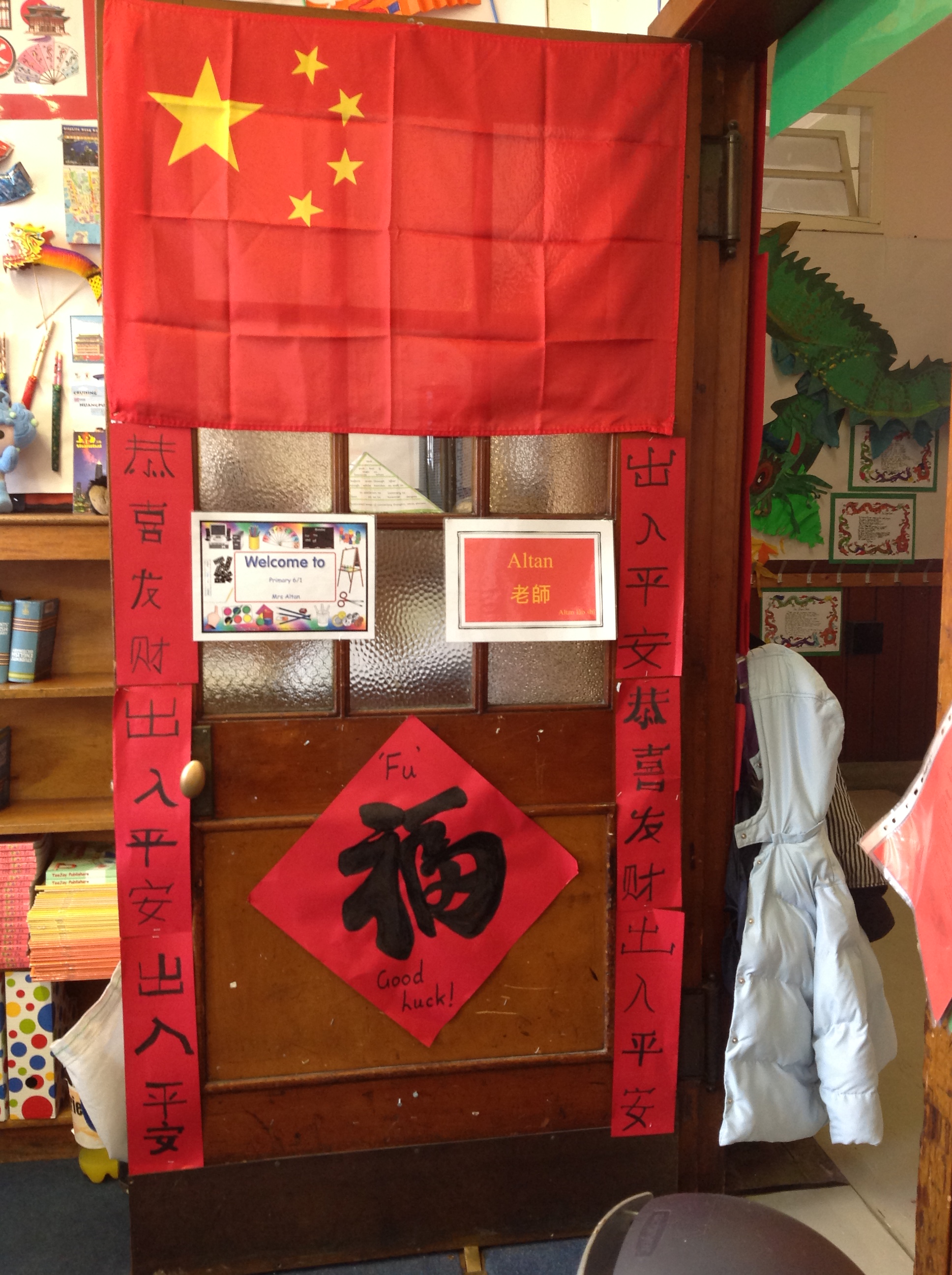 The pupils learned to sing two songs in Chinese from a commercial CD
The pupils learned to sing two songs in Chinese from a commercial CD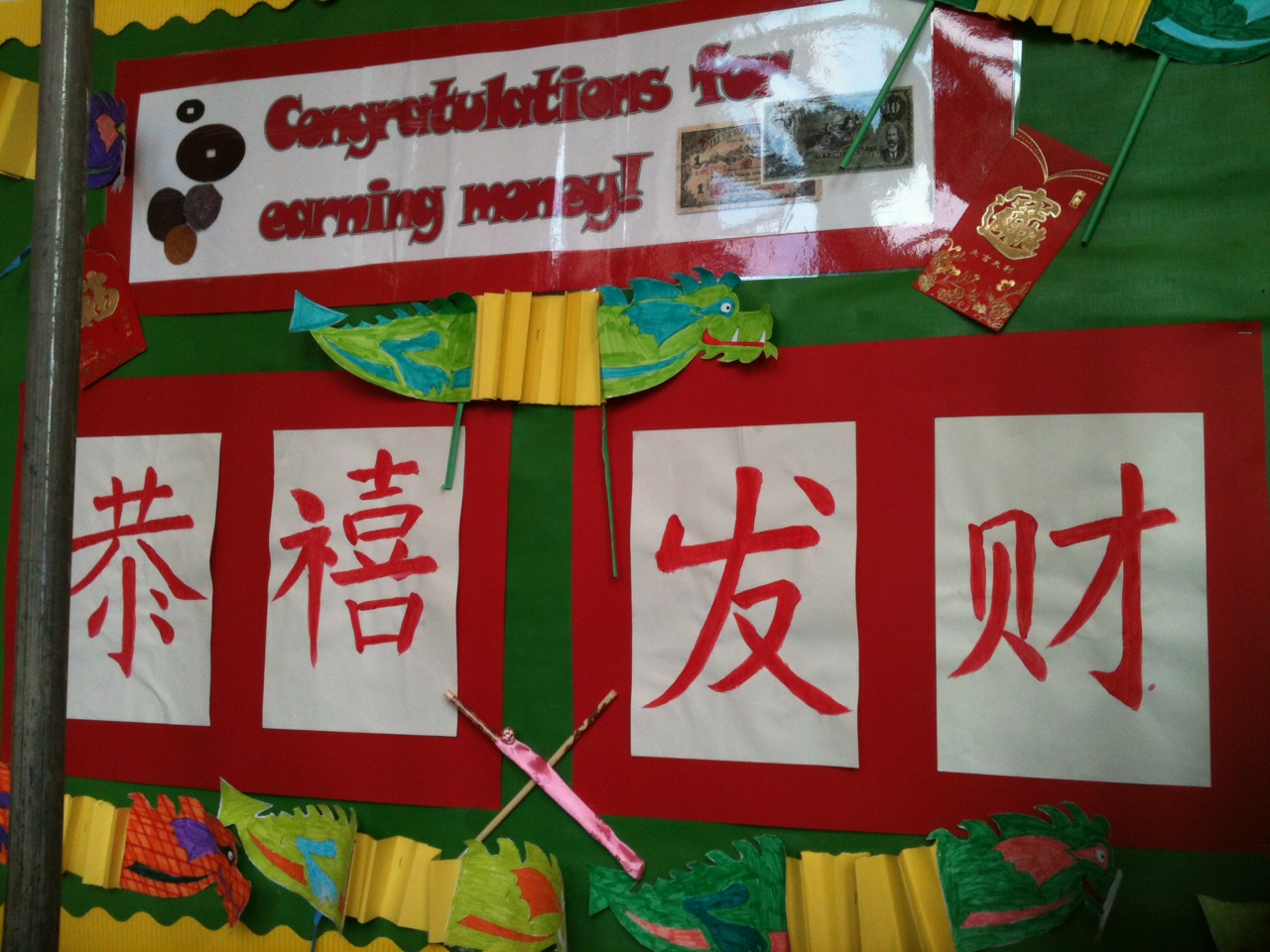 that also gave them the lyrics in Chinese, Pinyin and English. They performed them at assembly and parents’ evening. Their singing was recorded on the DVD that they produced about the whole topic. The Chinese parent helper led a simple calligraphy lesson which proved to be very popular with the pupils. They learned to make their own New Year couplets and explored their meaning. Their couplets were hung on the classroom doors and they were able to take some home to decorate their own doors.
that also gave them the lyrics in Chinese, Pinyin and English. They performed them at assembly and parents’ evening. Their singing was recorded on the DVD that they produced about the whole topic. The Chinese parent helper led a simple calligraphy lesson which proved to be very popular with the pupils. They learned to make their own New Year couplets and explored their meaning. Their couplets were hung on the classroom doors and they were able to take some home to decorate their own doors.